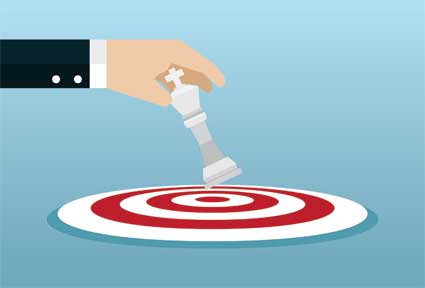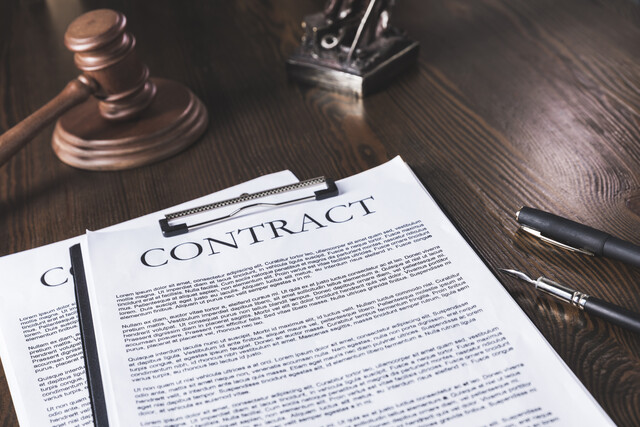A. Refinance as an Option
For banker-brokers, the specialized refinance market (inclusive of home equity loans and lines of credit, second mortgages and, yes, refinance strategies) provides consumers with a means of leveraging the equity in their home in a variety of ways.
Based upon the homeowner's individual situation and financial needs, it is the banker-broker's role to help steer them in the right direction as far as the applicable refinance loan vehicle is concerned.
Essentially, mortgage refinance is defined as paying off an existing loan with funds derived from a new loan, usually of an identical size to the first loan and relying upon the same property as collateral.
B. Home Equity Lines of Credit (HELOC)
Employing the acronym, HELOC, home equity lines of credit are structured to provide a line of credit upwards of a maximum amount as opposed to being associated with a fixed dollar amount.
Generally speaking, the majority of HELOCs are second mortgages. However, in increasing numbers, HELOCs are also being packaged as first mortgages and, as such, are incorporating the idea of refinance into consumer's very first mortgages.
Many consumers appreciate the access HELOCs provide to intermittent funding. For example, a large number of homeowners rely upon HELOCs to pay off their credit cards, fund college educations, or pay for other major expenses.
One of the major benefits of HELOCs is that consumers are able to draw and pay interest only on the amount they need. Because HELOC rates work in accordance with the prime rate, many believe that the fees are more consistent than the indexes used by conventional ARMs. This, however, is a misnomer, as the prime rate index frequently undergoes its own ups and down.
Another benefit of HELOCs is that they incorporate what is known as a draw period during which time the consumer can use the line of credit and a repayment timeframe during which it needs to be repaid.
During draw periods, which usually last 5 to 10 years, the borrower need only pay interest. During repayment periods, which can last anywhere from 10 to 20 years, the borrower needs to make payments against the principal the equivalent of the balance at the end of the draw period divided by the number of months in the repayment phase.
Note: Some HELOCs, however, require the entire balance be repaid at the end of the draw period; at that point, the borrower must seek out a method of refinance.
HELOCs differ from conventional home equity loans in that the borrower is not advanced the entire sum up front but rather is issued lines of credit from which they are able to use no more than the total amount (similar in function to a credit card).
C. Second Mortgages
While we have all probably heard the term, second mortgage have we ever taken the time to fully understand what this meant?
Essentially, a second mortgage is a loan taken against one's home on which a primary mortgage has already been taken out. The equity in the home is then used as collateral to secure the second loan.
As compared with the primary mortgage, the second mortgage carries less clout than the primary mortgage. In light of such, should the borrower default they will first need to clear their primary loan prior to addressing the outstanding balance on the secondary loan.
Situations where second mortgages prove to be a good option include:
- Individual has amassed a large amount of debt that needs to be paid off as soon as possible so not to incur additional fees and greater penalties.
- A financial opportunity arises where the individual needs a certain amount of cash flow in order to invest. However, it is important that the individual realize that the rate of return on the investment needs to be higher than the second mortgage rate in order for the decision to be profitable.
- Reason to avoid paying private mortgage insurance. However, this will only be possible should the individual be able to get a second mortgage constituting 20% of the purchase price of the home.
- Though some individuals may not be facing a financial crisis, they may simply wish to have additional spending money on hand to be able to afford a special vacation or make a major purchase, such as an automobile.
D. Second Mortgages: Rates
Second home loans enable borrowers to take out monies equal to that of their level of home equity. Formula-wise, the equity in the home is found by subtracting the amount paid toward the primary mortgage from the current appraised value of the home.
The majority of lenders allow borrowers to take out second loans when the total loan-to-value ratio of the primary and secondary loan equals 85% of the home's appraised value.
Note: There are lenders, however, in almost all of the 50 U.S. states (with the exception of Texas and West Virginia) who willingly grant second mortgages equal to 125% of the appraised value.
Interest rates on second mortgages are higher than those on primary loans. The reason for this is that should the borrower default, they will first need to pay off the primary mortgage before putting money towards the secondary mortgage.
Hence, due to the lag in payment time, there is a greater risk factor associated with second mortgages than there is with primary mortgages.
Additional factors to know about secondary mortgages:
- The client may choose either a fixed rate home equity loan or an adjustable rate home equity line of credit.
- It is up the banker-broker (in association with a lending source) to quote the applicant a rate reflective of their credit score, total loan-to-value ratio, and current market trends.
- Based upon the loan type chosen, second mortgage loan terms may vary from 15 to 30 years.
- Generally speaking, second mortgages cover shorter time periods than primary loans.
E. Refinance
To gain a sense of what refinancing means, consider the scenario when a homeowner takes out a newly secured loan in an effort to pay off an original loan backed by the same collateral.
Defined, refinancing is the refunding or restructuring of existing debt with new debt, equity, or a combination thereof. Most frequently, debt refinancing is undergone in times when the interest rate is on the decline as this helps to lower the individual's overall level of debt.
As part of refinancing, sometimes the issuance of equity is involved as a means of reducing the proportion of debt in the borrower's financial portfolio. Through refinancing, the maturity level of an individual's debt may be extended or reduced.
Hence, should someone already be carrying debt associated with a mortgage loan, why would they wish to redo what they have, essentially, already done?
As was stated above, the primary reasons why people elect to refinance include:
- To reduce monthly payments. To accomplish this goal, the borrower can apply for a new mortgage loan with longer payment periods (although similar rates). Within the newly formed structure, due to amortized payments, the monthly installments will be markedly reduced. Even in cases when the interest rate remains a bit on the high side, the borrower's regular monthly payments will still be seen as being smaller.
- To get a more favorable interest rate. In cases where the borrower may have initially locked in a fixed rate mortgage and interest rates have since fallen dramatically, they may opt to refinance the mortgage based on an ARM for the remaining life of the loan.
In this scenario, although the borrower may be susceptible to interest rate fluctuations, they can reap the rewards of lower interest rates at the present time, and, hopefully, for the foreseeable future.
- To convert an adjustable rate mortgage into a fixed rate mortgage. While similar to the previous reason the difference in thought is that although the borrower may not be presently looking to cash in on a more favorable interest rate, they have either tired of the risk element inherent in an adjustable rate mortgage or have become frustrated with the lock-in component of a fixed rate mortgage, where they are never able to benefit from falling interest rates.
- To make home improvements. There are instances when a borrower requests an amount above that of the outstanding loan figure to have extra cash on hand to make enhancements or repairs to the home.
F. Refinancing Step-by-Step
Akin to the original loan application, the act of refinancing involves walking the borrower through the steps of the lending process beginning with:
1. Ascertaining the amount of time they plan to stay living in the property.
2. Directing client to get pre-qualified for the loan.
3. Finding a mortgage vehicle that is more favorable than the client's existing one.
4. Determining the mortgage loan's anticipated interest rate by assessing the client's credit score, requested loan amount, points paid, and lock-in rate, if applicable.
5. Comparing or contrasting the offered interest rate with the current rate.
6. Getting pre-approved: calculate monthly payments, subtract new payments from old payments to ideally achieve the amount saved by taking out a new mortgage; divide monthly savings by total closing costs to attain the number of months it will take the borrower to recover the closing costs (referred to as the break-even period); assess the months gained against the time period intended to maintain ownership of the house.
The test is that if the gained period exceeds the ownership period than refinancing may indeed be a practical choice.
Once your client has been pre-approved, you will then be responsible for the following:
- Instructing your client to have an appraisal of the home performed (even though one was paid in the initial mortgage go-round, a second appraisal fee will be required).
- Establishing a closing date and signing location.
- Reviewing the Good Faith Estimate and other closing documentation with the client to ensure that they are aware of the costs that may be due at the closing.
- Participating in the closing whereby you need to present the client with all the applicable paperwork, respond to any lingering questions, and fully acquaint them with all the related financial and regulatory information.
Note: When a client opts to refinance, their closing costs are included in the total loan amount as opposed to them being responsible for paying such fees out of pocket.
- Once mortgage loan papers have been signed, what is known as the period of rescission begins. With this time frame, the client has three business days to decide whether to stick with the mortgage loan or to cancel it. Following the initial three-day period, the funds are released by the mortgage lender and the loan is finalized. Should the client plan on receiving cash as part of the refinance agreement, this then is also the time when their check will be issued.
























